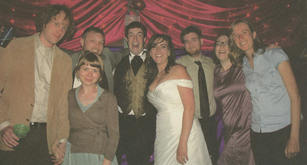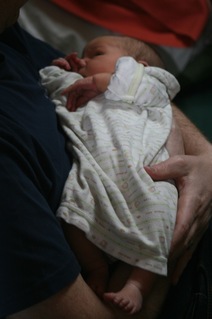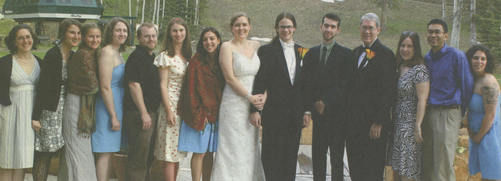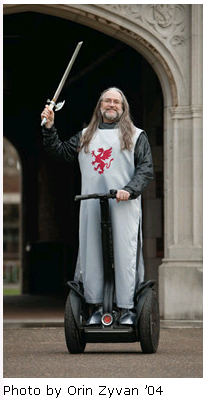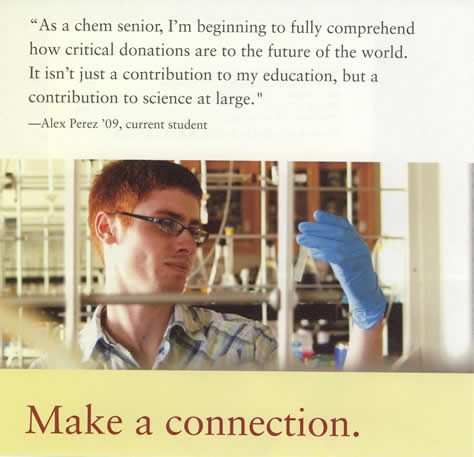We are slowing working our way through a pile of recent Reed magazines. The June ’10 issue contains a number of tidbits featuring Reed chemists …
 The inside cover is an ad for the Annual Fund. Ida Peric ’10 is
The inside cover is an ad for the Annual Fund. Ida Peric ’10 is
quoted, “Now I can fully appreciate just how much this place has
strengthened my character and shaped my mind. I am graduating, but I
know that the time I have valued and skills I have learned at Reed will
stay with me for the rest of my life.” I was lucky enough to have Ida as
an advisee for her entire Reed career, as well as a student on several
occasions, so they let me sit next to her for the photo.
An article on Reed’s Academic Resource Center, affectionately named the DoJo (short for “Dorothy Johansen House”), described how Reedies get help with their chemistry work, among other things (“Sharpening Skills at the DoJo”, p. 26-29). Prominently mentioned were organic chemistry (“one of those legendary classes that generations of Reedies have spoken about in hushed tones”), student tutors, and Prof. Arthur Glasfeld (“I can’t think of a year when I’ve had a stronger group of seniors – majoring in chemistry – and each of them is a tutor at the DoJo and each of them has gotten tutoring at the DoJo”).
The Class Notes section reported that “Sarah Kliegman ’02 successfully defended her PhD in inorganic environmental chemistry at the University of Minnesota under the guidance of Kristopher McNeill ’92. For the next few years she is off to Zurich, Switzerland, for a postdoc, and will continue collaborating with Kris on environmental chemistry at the Swiss Federal Institute of Technology (ETH-Zurich).” Another note told us that “Julia Robinson ’06 and David Surry were married on February 12, at the city clerk’s office in Manhattan. Julia writes that she and David met at MIT, where she is in her fourth-year as a doctoral student in organic chemistry and he is a postdoctoral researcher. (‘To be perfectly honest, we met at the campus pub over pitchers of cheap beer and free chicken wings — very romantic.’) After Julia graduates in June 2011, the couple will move to New York, where she will work in ‘anything-but-chemistry,’ and he will work in intellectual property.” (A very small picture of the married couple and two Reedie guests appears on p. 54).
Reediana (Books by Reedies) listed the latest book from Barbara Ehrenreich ’63, Bright-Sided: How the Relentless Promotion of Positive Thinking has Undermined America (Metropolitan Books, 2009).
In Memoriam reported on the passing of Prof. Arthur Hamilton Livermore ’40 (Professor in Chemistry 1948-65) on October 12, 2009 in Gloucester, MA. “Art’s fascination with chemistry was sparked at the age of 12, when he received a chemistry set for Christmas, he told Gwen Lewis’ 65 in an oral history interview in 2005. Too young to take chemistry in his first year of high school, he resorted to building a laboratory in his basement. ‘There was a drug supply company in downtown Portland, and I bought all sorts of chemicals there including some chemicals that you’d be in real trouble selling kids today — potassium chlorate and sulfur. You mix them and you have an explosive mixture. I mixed the dry powders and wrapped them in layers of newspaper, and then hit them with the flat head of an axe, and it went boom! Made a tremendous noise.’ After earning a BA from Reed in chemistry, Art earned a PhD in biochemistry from the University of Rochester and did postdoctoral work at Cornell Medical School. During the war, he worked on a research team led by Nobel Prize-winning chemist Vincent du Vigneaud that was the first to synthesize penicillin.
At Cornell, Art received a visit from his former adviser, Arthur F. Scott, who invited him to return to Reed. Back at the college, Art taught courses in chemistry, biochemistry, and the use of radioactive materials. In 1954, he was awarded a Guggenheim Fellowship for his work in molecular and cellular biology. He was also the host of the local TV show Secrets in Science, broadcast on Portland’s KGW-TV, intended to popularize science for a young audience. He began a nationwide event designed to teach meteorological concepts to elementary and middle school students, and also worked on the development of the Einstein Fellows program, which introduced outstanding secondary school science and mathematics teachers into the ranks of Congressional staffing.
In 1965, Art resigned from his position as professor of chemistry at Reed and worked full-time at the American Association for the Advancement of Science (AAAS) in Washington, D.C., where he focused on developing science curricula for elementary classrooms and improving the quality of science teaching at all grade levels. He retired from AAAS in 1981, but continued to work as a consultant with the State of Maryland, Friends of International Education, the Triangle Coalition for Science and Technology Education, and the International School in Washington, D.C., and as a volunteer in public schools. Art’s passions included sailing — whetted in his years as a Sea Scout — as well as time spent in the Cascade Mountains and at the Oregon Coast. He played piano, and sang baritone roles in madrigal quartets, in Gilbert and Sullivan operettas, and in the St. Columba Episcopal Church choir in Washington, D.C. Art married Janet E. Hayes ‘ 38 in 1940, and Jane E. Marye in 1965. He had two daughters and four sons, including Arthur H. Livermore ’69.”


